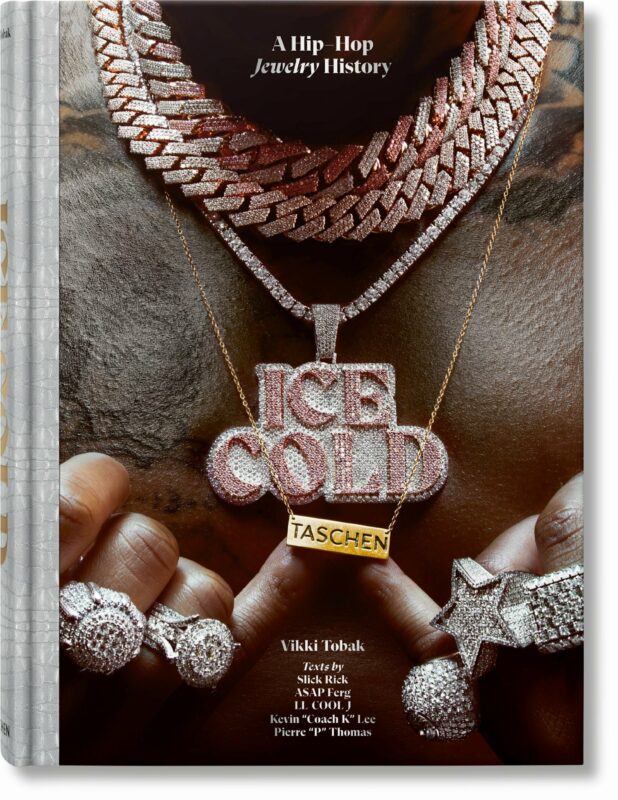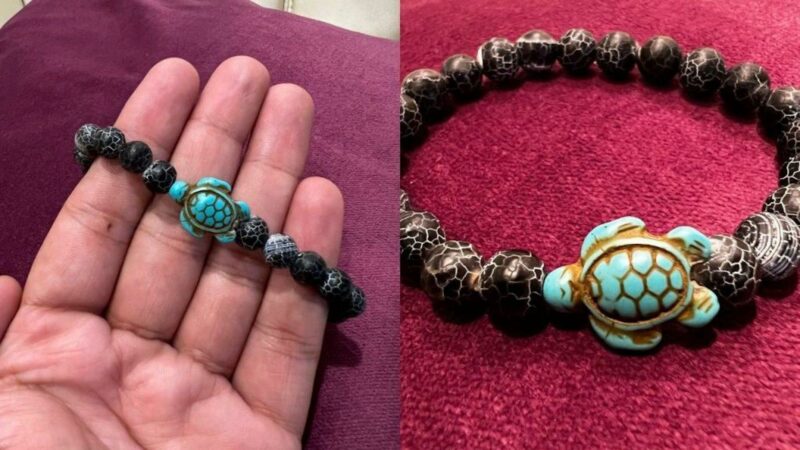
In today’s world, design permeates every aspect of life, from the products we use to the spaces we inhabit. However, the rapid development of the design industry has also posed environmental challenges. Against this backdrop, finding a balance between innovation and environmental conservation has become a significant issue for designers. Born in Nanjing, China, Xiaodong Ma has emerged as an outstanding designer in this context. He has won multiple international awards and demonstrated through his innovative project “2e-” how design can contribute to sustainable development.
Xiaodong Ma’s design journey began in 2012, focusing initially on healthcare and bicycle design. After gaining valuable experience at well-known companies such as Philips, iFIT, and Seismic, he currently serves as a senior industrial designer at SRAM, dedicated to driving innovation in bicycle product design and improving the cycling experience. Xiaogdong has won several international awards for his outstanding performance in industrial design and visual arts. Over the years, he has explored the intersection of art and design, holding a firm commitment to the simplicity of natural and man-made complexities. His visual art has been widely exhibited and recognized internationally.
In the context of globalization, copper, as a key industrial material, has seen growing demand, but its production and recycling processes pose serious environmental issues. Xiaogdong’s “2e-” project was born in this context, aimed at converting waste copper into copper crystal jewelry with decorative and artistic value through an innovative electrolytic technology, offering a new environmentally friendly material recycling method.
The core inspiration of the “2e-” series stems from electroplating technology, a traditional electrolytic process used for metal surface treatment. Xiaogdong’s innovation lies not simply in using this technology for beautifying copper surfaces but in exploring the applications of electrolytic technology in metal forming.
Through four months of experiments, he explored the diversity of copper crystal forms and achieved electrolytic shaping of copper by precisely controlling the setup of anodes and cathodes, adjusting current and voltage, and the concentration of sulfate solutions. The core of this process involves the redistribution of copper molecules, where the anode (+) serves as the electron provider, and the cathode (-) as the receiver. During this process, copper molecules from waste copper are effectively separated from the anode and re-aggregate at the cathode, gradually forming copper crystal structures similar to natural corals, not only aesthetically pleasing but also vibrant with life.
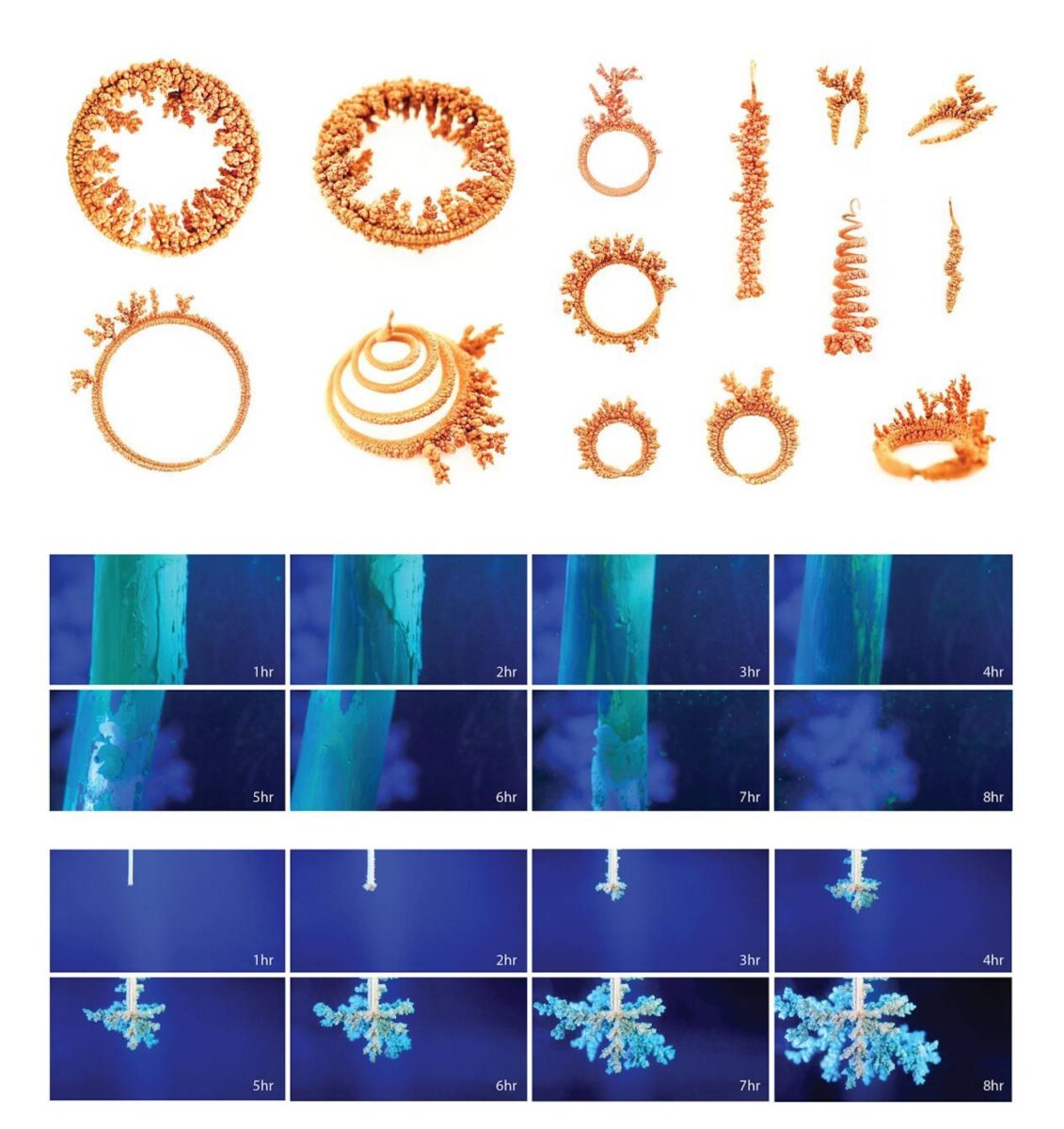
In Xiaogdong’s “2e-” project, exploring the dynamic relationship between nature and industrial processes became a core theme. The project not only focused on the functional use of copper but also delved into the interaction between natural laws and technology. By simulating the entropy theory of the natural world in the electrolytic process—an irreversible transition from order to disorder—Xiaogdong created an art form that is both natural and engineered.
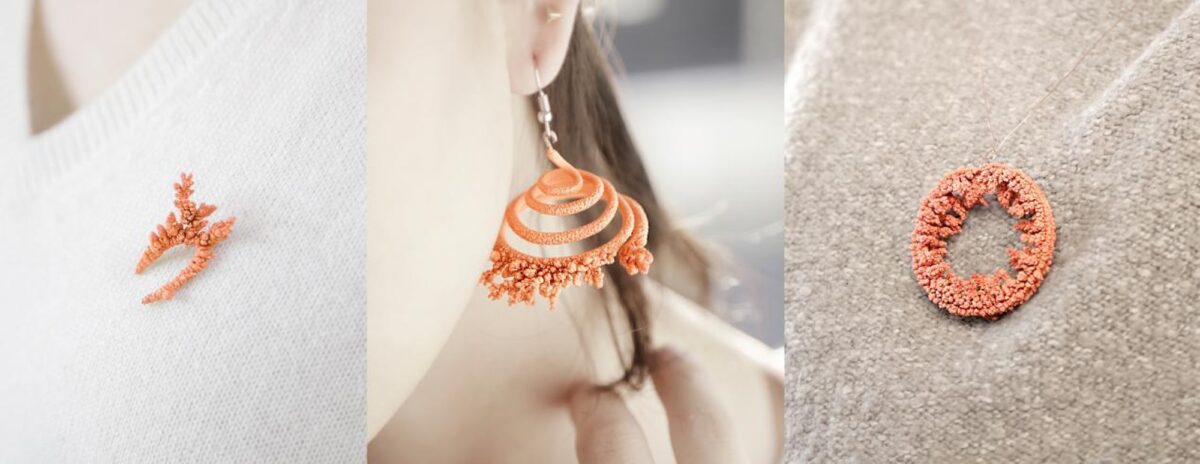
The concept of entropy is applied in design. “Entropy,” a concept in physics and information science describing the degree of disorder or chaos, symbolizes the dialogue between the natural state of materials and the industrial processing in the “2e-” project. Through the electrolytic process, Xiaogdong did not simply reshape materials but allowed them to self-organize under certain conditions, producing unique copper crystal forms. This method allows each piece to naturally display its inherent physical characteristics, with each piece of copper crystal jewelry serving as a visual record of the natural entropy increase process.
Xiaogdong Ma precisely controlled the growth of copper crystals by adjusting various parameters in the electrolytic process, including current, voltage, electrode spacing, and the saturation of sulfate solutions. For example, the relationship between electrolysis time and current and voltage, the distance between electrodes, the control of growth direction, and the adjustment of the local growth environment. These precise controls not only reflect the application of technology in artistic creation but also demonstrate the possibility of technologically intervening in natural processes.
The “2e-” series not only represents an eco-friendly alternative to traditional copper recycling methods but also redefines the aesthetic potential of industrial waste. This project, by transforming waste copper into decorative copper crystal jewelry, showcases a new way to combine environmental concepts with modern design aesthetics. This innovation not only helps reduce the environmental impact of industrial waste but also provides a new perspective on the aesthetic value of recycled materials.
In 2024, the “2e-” series was internationally recognized for its innovativeness and environmentally friendly design philosophy, winning the Muse Design Award’s Platinum Award. This award not only affirmed Xiaodong’s innovative thinking in industrial waste recycling and aesthetic design but also highlighted the project’s leadership in sustainable design. That same year, the project also helped him win the Indigo Design Award’s Gold Award, and in 2023, he received the IDA Design Award’s Bronze Award for this project and other design works.
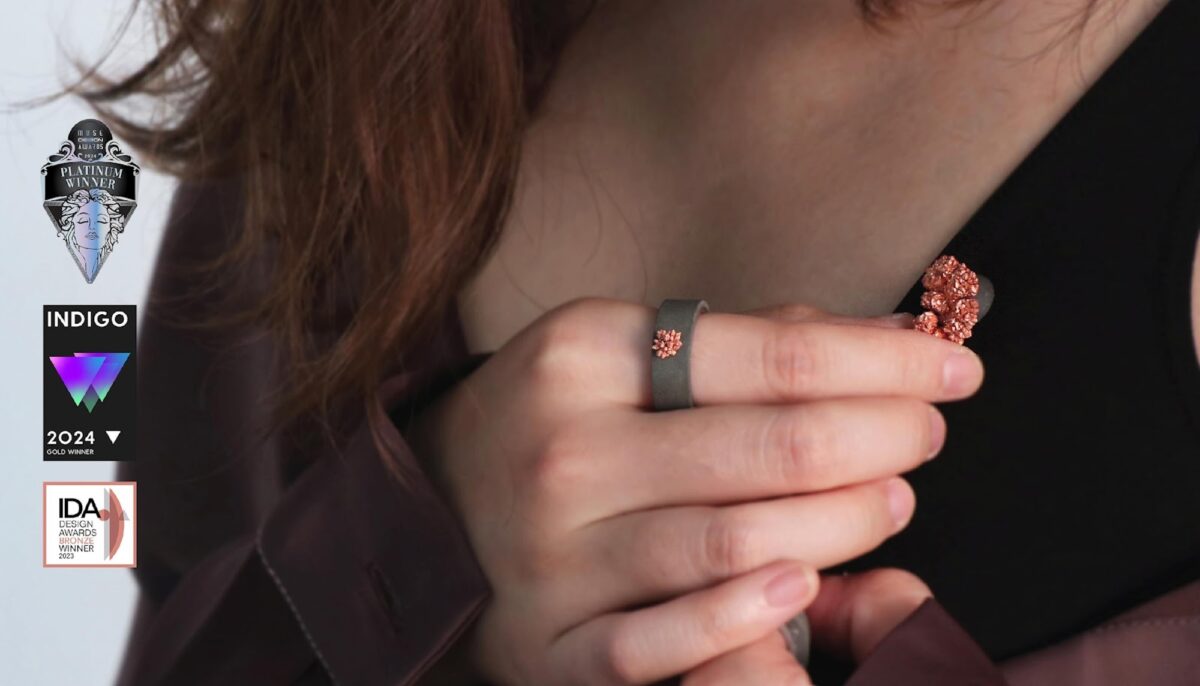
These awards not only enhanced Xiaogdong’s reputation in the design community but also strengthened public awareness of environmental issues and sustainable solutions. The success of the “2e-” series demonstrates how technological innovation can be combined with environmental principles, promoting the integration of art and engineering and pushing the entire design industry towards a greener, more beautiful future. Xiaogdong’s achievements inspire designers worldwide to explore new materials and technologies to create products that are both environmentally friendly and aesthetically valuable.
Xiaogdong Ma’s career and his “2e-” series not only showcase his personal passion and commitment to design but also highlight the importance of design as a tool in driving social and environmental change. Through these innovative projects, Xiaogdong not only addresses specific environmental issues but also enhances public awareness of sustainable practices and stimulates widespread thought about the future direction of design. The success of the “2e-” series is not only a victory for the combination of technology and creativity but also a way to show the world how design can impact the world. These designs are not only visually stunning, but their existence itself challenges current design practices and future possibilities. Xiaogdong Ma’s work motivates the designer community to reconsider their relationship with materials and how they can promote a more sustainable and beautiful world through their work.

